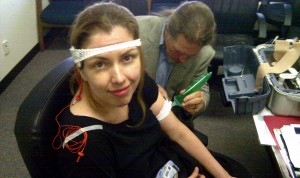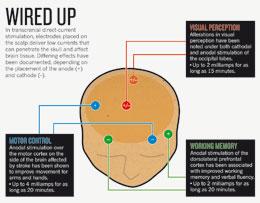Prof. Bikson is co-founder and CEO of Soterix Medical Inc.
Journal of Visualized Experiments has a video demonstrating the details of setting up and administering a tDCS session using the Soterix device.
Electrode Positioning and Montage in Transcranial Direct Current Stimulation
The Soterix website and all that shiny new technology!
They make reference to ‘HD-tDCS‘ and diagram multi-electrode application for fine-tuning current distribution. Download their device manual (pdf).
Prof. Bikson’s lab has a YouTube page. They seem to have constructed a computer model for determining where current flows according to how electrodes are placed.
Prof. Bikson’s group uses a range of research and engineering design tools including cellular and animal studies, computer simulations, imaging, and clinical evaluation. Prof. Bikson’s research has recieved support from funding agencies including NIH (NINDS,NCI,NIGMS), The Andy Grove Foundation, The Wallace H. Coulter Foundation, and the Howard Hughes Medical Institute. . Prof. Bikson is actively involved in biomedical education including outreach to underserved groups.
via Faculty – Marom Bikson – Department of Biomedical Engineering – CCNY – CUNY.

 Photograph by Matt Sornson
Photograph by Matt Sornson

